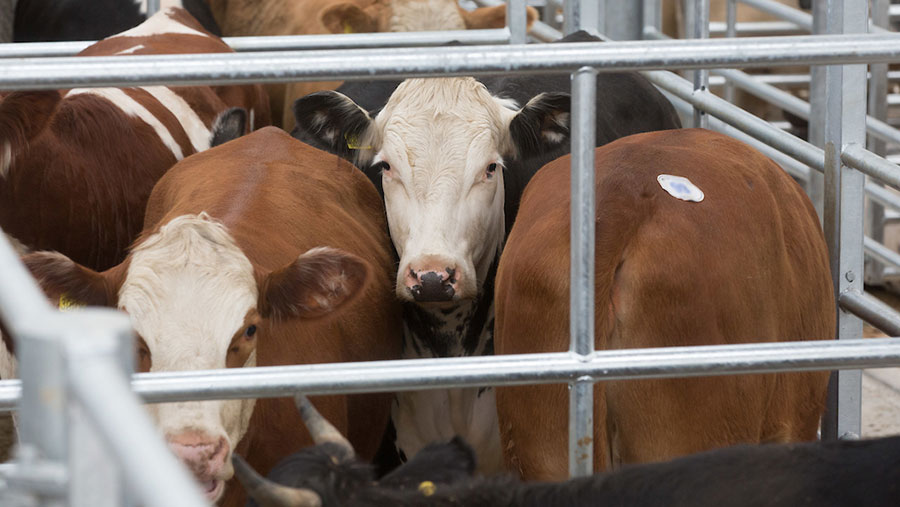Finisher margins pressured as store cattle prices firm
 © Tim Scrivener
© Tim Scrivener Finishers are paying more for store cattle this year following a minor improvement in processor demand and pricing.
Store cattle prices hit a historic low in the autumn of 2019 but have since tracked a slight rise in prime beef values, with an R4L steer up 4.6p/kg since the start of the year to 345.6p/kg.
However, this 4% increase in prime cattle values is being outstripped by a 7-11% lift in store cattle prices, AHDB data show. This means finishers are feeling the pinch again.
See also: Autumn store sales hit by beef crash
Frome
Frome market reported an entry of 479 last week (21 February), with 10-month-old continental steers at £652 and £500 and Blue steers at 11 months to £775.
An entry of 24-month-old Friesians saw good demand, topping at £1,000 twice and others at £990.
Auctioneer Trevor Rowland told Farmers Weekly that trade was flying. Cattle were £50 up on the year and more than £100 dearer on the autumn price.
He said finishers were turning over cattle quickly, with abattoir waiting lists no longer an issue. However, he stressed that with current beef prices, finisher margins would be very thin.
“If you’ve sold your fat cattle – and there are plenty of people selling 50-60 a week – you can’t stand still, you’ve got to replace them,” he said.
“There’s serious competition for stores and at times they do look too dear.”
He said the current costs to feed a big heifer for a week were £15 and for a smaller heifer £10-12, which he said made profits looks very slim.
Stirling United Auctions
United Auctions auctioneer John Roberts has seen a 20-25p/kg rise in store cattle averages this year.
He said the quality of calves was now slightly better, with a good number of high-quality yearling suckler cattle coming through the ring.
An entry of 673 bullocks averaged 220.87p/kg, 29 dairy bullocks averaged 212p/kg and 566 heifers averaged 223p/kg last week (19 February). Young bulls averaged 223p/kg.
He said the availability of feed this year was helping demand, particularly for younger cattle.
“People can buy earlier and wait for the grass because there is plenty of feed,” Mr Roberts said. “This is helping the smaller cattle sell. We are also seeing slightly more forward stores at the moment as people have held on to them at autumn time, hoping for a lift in the trade.”
